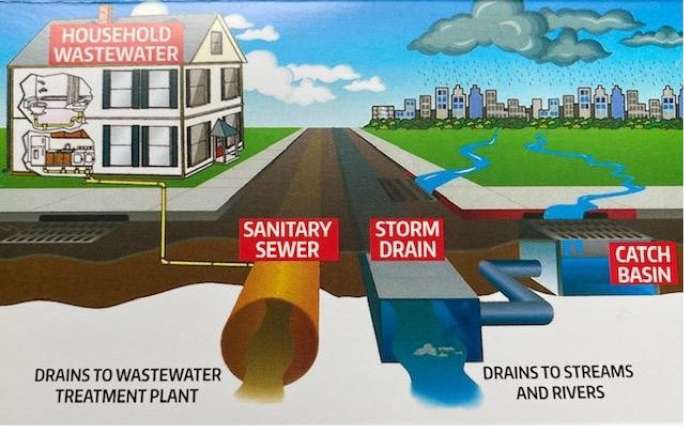
Have you ever wondered about the water that flows through our drainages and sewers? It’s essential to distinguish between sanitary wastewater and stormwater, as confusion between the two often leads to criticism of utility service providers for mismanagement.
Storm water is frequently mistaken for sanitary waste water, and it originates from various sources. It mainly comprises water from foundation drains, roof/gutter drains, and trench catch basins. Unlike sanitary wastewater, storm water is not subjected to treatment. Instead, it flows through the designated drain network until it eventually reaches a water body. Along the way, it may pass through a natural lagoon, which acts as a natural filtration system, further purifying the water before it reaches its final destination.
Sanitary wastewater, on the other hand, arises from several sources within our households and establishments. This type of water includes waste from toilets, washers, dishwashers, sinks, and floor drains. Sanitary waste water is channeled into a utility’s sewer grid, where it is then transported to a wastewater treatment plant. At the treatment plant, the water undergoes a complex purification process, ensuring that it is thoroughly cleansed before being returned to the water body. In some cases, the water may pass through a natural lagoon as an additional step to remove impurities before being discharged.
During the construction process, engineers take great care to separate stormwater and sanitary waste water drains. This segregation is crucial because these two types of water carry effluent from different sources and are directed to different destinations. This careful planning ensures that stormwater and sanitary waste water are managed effectively, preventing cross-contamination and potential environmental hazards.
The National Water and Sewerage Corporation (NWSC) is committed to promptly responding to sewer leak calls and ensuring the smooth functioning of the sewer system. Whenever there are concerns about stormwater, often mistaken as sewer overflows, NWSC engineers collaborate with partner agencies such as the Kampala Capital City Authority (KCCA) to clear blocked drains and resolve any issues. NWSC is also actively involved in infrastructure development projects, providing valuable input to facilitate seamless sewer management systems for new developments.
By understanding the differences between stormwater and sanitary wastewater, we can appreciate the complexity and importance of proper sewer management. It is crucial to distinguish between these two types of water to avoid confusion, maintain public health, and protect our environment. The collaboration between utility service providers, local authorities, and engineers ensures that our drainage and sewer systems function effectively, safeguarding the cleanliness and well-being of our communities.


